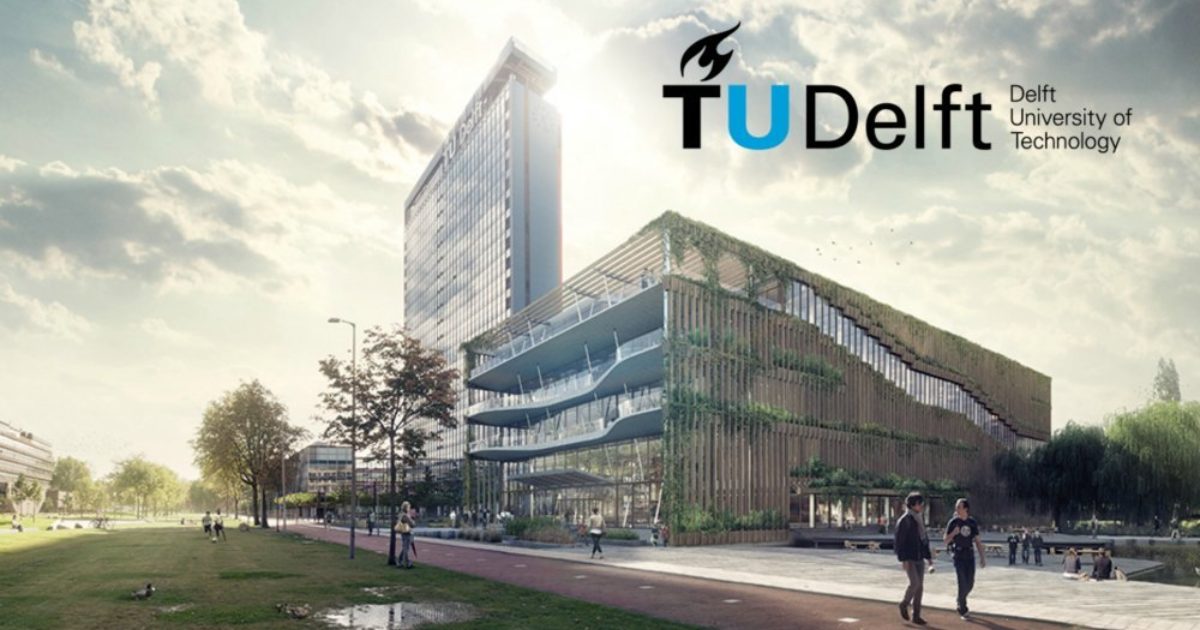TU Delft’s WaterStraat celebrates five years of innovation
The recent news is abundantly clear: severe weather, yellow code alerts, and water damage in large parts of the country. Due to climate change, we can expect more heat and drought, but also more rainfall in a short period of time. And when it rains, it pours. A densely built environment with a lot of hard surfaces is not resilient. It needs to be different in many places, but how? Five years ago, The Green Village, VPdelta+, and the Hoogheemraadschap of Delfland established the WaterStraat (WaterStreet) on TU Delft Campus to provide space for innovation and research to help us deal with extreme weather in urban areas. Back in a time when spatial adaptation was not yet part of the Delta Programme. Today, the fifth anniversary was celebrated, and the achieved successes and lessons learnt were shared. Delta Commissioner Peter Glas visited the WaterStraat for this special occasion.
Five years in a nutshell
From Groningen to Roermond, various innovations have been applied in public spaces over the years. Sometimes visible, sometimes hidden underground. Always for the benefit of a climate-resilient environment. Marjan Kreijns, Director of The Green Village and VPdelta+, explains: “Since 2018, 29 innovations have been tested, some of which have already been implemented in neighbourhoods in over 100 locations throughout the Netherlands. This has resulted in more than 350,000m2 of climate-adaptive street surfaces and the buffering or delayed drainage or infiltration of 250,000m3 of water into the ground.”
One of these scaled-up projects is the WaterTable by Trewatin. With their concrete water table, Trewatin prevents damage and inconvenience caused by heavy rainfall. They also ensure that valuable fresh water seeps into the soil and groundwater. The concrete table elements create a hollow space where large amounts of water are buffered. Another example is the Urban Rain Shell, a method for buffering, purifying, and using rainwater. Shells and minerals act as natural filters. Over the years, thousands of visitors of the WaterStraat have learnt about what is happening beneath the pavement. Ger Pannekoek from EWB believes that the field lab serves as a hub for knowledge exchange for parties involved in climate adaptation, which is just as valuable as the research conducted there.
Meanwhile, the WaterStraat continues to innovate, according to Marjan Kreijns. “For us, an experiment is temporary; a test lasts two or three years. So we can say something about how a technique or facility functions in that period, but we don’t know how it performs after five or ten years under changing conditions. That makes people involved in management and maintenance somewhat hesitant about new methods, which is quite understandable. That makes it all the more important that innovations outside the field lab are used for a longer period and are also monitored to understand how they perform in the long term.”
Picture: Annelies van ’t Hul
Knowledge Festival
Today, the fifth anniversary of the WaterStraat was celebrated with a knowledge festival. Pivotal to the day were the lessons learnt and a call to action: our cities are still far from resilient to extreme weather. The day was opened by Manita Koop, Hoogheemraad of Delfland, followed by a keynote speech by dr. Ir. Martine Rutten from the TU Delft. Delta Commissioner Peter Glas reflected on five years of the WaterStraat and received the first copy of the ‘Five Years of WaterStraat’ magazine. Attendees then had the opportunity to visit 14 innovations and attend multiple workshops on research findings and practical challenges. The festival concluded with live music by Delft student band SPØTTR.
Innovation requires courage, time, and effort
We asked our speakers for their perspective on the WaterStraat. Delta Commissioner Peter Glas emphasised the importance of action: “We are increasingly facing weather extremes: wet becomes wetter, dry becomes drier, and hot becomes hotter. The WaterStraat serves as a testing ground for innovations and is crucial for the resilience of our cities and towns. Innovation requires courage, time, and effort from all parties involved. Given all the challenges that climate change brings, I encourage all parties to continue wholeheartedly with this endeavour.” Hoogheemraad Manita Koop added: “As a water board, we are working towards a climate-resilient and water-robust region by 2050. To enhance the region’s sponge effect, innovative products and wise solutions are needed. That’s why we, as a water board, are pleased with the WaterStraat, where entrepreneurs and researchers have the unique opportunity to test and further develop innovations into scalable solutions for a water-robust and climate-resilient living environment.” Marjan Kreijns reflects on a successful anniversary: “Over the past five years, 40,000 visitors have already found their way to the WaterStraat. We hope to expand this in the coming years!”

